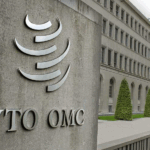Editor – Swetha TM
The Sahara Desert spans nine million square kilometers, absorbing 22 million terawatt hours of solar energy annually. This exceeds humanity’s energy consumption by over a hundredfold. With its vast sunlight exposure, the Sahara offers an opportunity for solar power generation. Harnessing this energy could potentially address global energy shortages. Calculations indicate that covering just 335 square kilometers of the Sahara with solar panels could meet the world’s energy demands, representing only 1.2% of the desert’s total area.

The Sahara Desert’s abundant solar energy has prompted suggestions of covering it with solar panels to meet global energy needs. However, challenges like solar panel efficiency and environmental impact hinder large-scale solar farms’ practicality. Alternative solutions, such as concentrated solar power plants using large mirrors, are being explored. Additionally, solar energy can be utilized on a smaller scale to power individual buildings and rural communities.
Disrupting natural systems could have severe consequences, as seen with the Amazon Rainforest, which relies on nutrient-rich sands from the Sahara. Without these sands, the Amazon could suffer from nutrient deficiency, leading to its decline. Moreover, increased desert heat may impact global weather patterns, potentially reducing rainfall in regions like the Amazon and causing instability elsewhere, such as in North America and Asia.
The Sahara Desert, spanning about nine million square kilometers, receives an astounding 22 million terawatt hours of solar energy annually, exceeding humanity’s energy consumption by over 100 times. Could covering the desert with solar panels solve our energy needs? Solar panels work by capturing sunlight, using its energy to generate electricity. However, they’re limited in their ability to convert sunlight efficiently due to wavelength constraints. Despite advancements, only about half of the received sunlight can be converted into electricity, with some light particles reflecting off the panels without contributing to electron displacement.
We don’t require the entire Sahara Desert to be covered with solar panels. Even covering just 20% would be excessive. Instead, smaller solar farms covering approximately 1.2% of the surface could sufficiently generate electricity without causing severe environmental impacts.
Here’s a map of how of the entire world would need to be covered with solar to power everything.

Covering a square in Libya with solar panels could power Europe and Northern Africa. The concept of “solar across the Sahara” is exciting due to its immense potential. For example, relocating Germany’s solar panels to Algeria could sustainably power the country’s lights and factories for a significant period annually.
Thanks to scientists, engineers, and government funding, this is now possible. Incorporating anti-reflective coatings and surface patterns boosts sunlight capture, raising efficiency to 25% from the low teens. Experimental models even reach 47% efficiency. Solar energy costs dropped by 89% in the past decade, aided by shared supply chains. This made solar power the most cost-effective electricity source globally.
Countries like India, China, Egypt, and the US deploy these advanced panels in desert regions. These large-scale solar farms, covering 15 to 56 square kilometers, provide energy to local residents. However, intense heat poses a challenge. When solar cells can’t convert or reflect all light, excess is absorbed as heat, reducing panel efficiency. Many farms use cooling systems powered by fans or water circulation to maintain optimal temperatures.
Despite existing systems, desert solar panels absorb more heat, potentially altering the region’s climate. Integrating large-scale solar farms into existing infrastructure is feasible, yet transmitting electricity over long distances poses challenges. Some countries explore global grid connections, while many solar farms store excess energy or convert it into clean gas. However, these methods are currently costly and inefficient. Industrial renewables, like fossil fuels, rely on environmentally harmful operations and carbon-emitting supply chains. Thus, despite potential benefits, practical and economic hurdles must be addressed before widespread implementation of desert solar projects.
While transmitting power over long distances is feasible, challenges arise due to inadequate electrical grids in many African regions. Financing, construction, and political stability also pose hurdles for large-scale solar projects. Additionally, desert-based projects could face terrorism risks. The economics of solar energy in deserts are complex due to extreme temperatures, sandstorms, and limited water access for cleaning. Land rights acquisition involves significant expenses, and environmental and social impacts must be addressed. Despite the potential benefits, practical and economic obstacles need to be overcome before widespread implementation of desert solar projects becomes feasible.
Solar energy suits various scales, from large industrial farms to small installations powering buildings and rural areas. It supplements existing energy sources or acts as a primary source in remote regions. Solar panels’ simple components enable quick installation and upgrades, driving widespread adoption and affordability.
They aren’t the only solution; some large solar plants use giant mirrors, like Morocco’s Noor Power Plant in the Sahara. These mirrors reflect light onto a receiver, converting it into heat and electricity. Though they may affect local wildlife, they have a smaller landscape impact and can generate power after sunset due to retained heat. This approach shows promise for meeting energy demands through multiple projects. Thus, to meet growing energy demands, we must explore solutions at both large and small scales.
References: –
https://blog.byjus.com/knowledge-vine/what-if-006-sahara-desert-solar-panels/
















Leave a comment